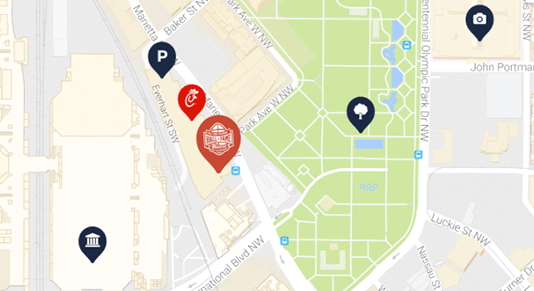April 30, 2015
Throwback Thursday - US Armed Forces and College Football
With May 16th being Armed Forces Day, the College Football Hall of Fame will be sharing stories this month highlighting the connection between the US Armed Forces and college football.
The links between the US Armed Forces and college football are many. The annual Army-Navy game is the only true national rivalry in the sport and remains one of the most anticipated games on the football calendar.
Obviously, the three service academies spend the bulk of their schedule against standard four-year colleges and universities. But Army, Navy and Air Force are not the only military organizations that have fielded football teams.
Military bases began fielding football teams as far back as the 1890s. On occasion they scheduled games against colleges and universities, but for the most part they played games amongst themselves. Service football also had championships, bowl games, all-service teams and all-star games.
During World War I and World War II, these service teams gained added importance as the sheer number of these installations grew due to the two war efforts. The quality of play improved greatly as college stars moved from the campus to these bases as part of the war effort. The frequency of these teams now playing major college teams greatly increased.
A key game of the 1918 season came when the Great Lakes Naval Training Station team traveled to Annapolis to play unbeaten Navy. The Midshipmen, coached by Hall of Famer Gil Dobie, led 6-0 when late in the game they were driving toward the Great Lakes goal. Bill Ingram (who would become a HOF member as a coach) dove to make a clinching score only to fumble into the end zone.Harry Eileson picked up the ball and headed down the sideline past the Navy bench toward the Great Lakes goal. A reserve Middie jumped from the sideline and tackled Eileson. The officials ruled that Elision would have scored and gave the six points to Great Lakes. The Bluejackets then won with the successful extra point. Paddy Driscoll, a Hall of Famer from Northwestern, was on that Great Lakes team, as was George Halas of the Chicago Bears. The Bluejackets would end the season with a Rose Bowl victory.
During World War II, service teams were every bit as good as the major college teams. In the final 1943 poll, Iowa Pre-flight was #2 with three additional service teams in the top 10. The following year, half of the teams in the final top 20 were service teams. The reason for the success of these teams is the fact their rosters contained not only college stars, but professional players as well. Many of these players would become Hall of Fame players. These teams also had great leadership with coaches like Bernie Bierman, Jim Crowley, Bear Bryant and Paul Brown.
The service teams had unusual nicknames like Cloudbusters, Airdevils, Blockbusters, Winged Commandos and Amphibs. The service teams also played in major bowl games like the Sun and Cotton Bowls.
After World War II, the frequency of college vs. service team games declined. But in UCLA’s 1954 National Championship season, the Bruins opened the year with a 67-0 win over a San Diego Naval Training Center. One of the more active teams in playing against collegiate competition was the Quantico Marines, who last played a four-year school in 1972.
Secure your tickets now and be apart of the legacy. Don’t miss the chance to experience greatness firsthand!
Unlock exclusive access and be part of something legendary. Join our community and enjoy premium benefits today!
Take a piece of greatness home. Shop our exclusive collection of themed items and preserve the legacy in your own way!

